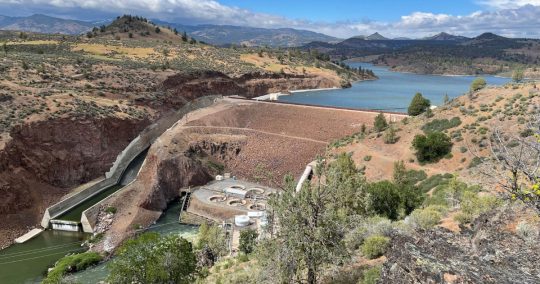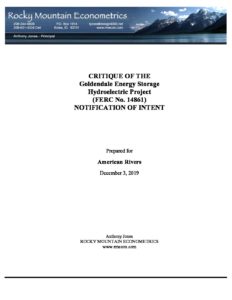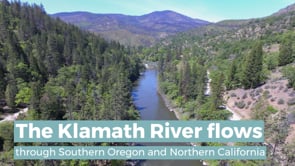Klamath Dam Removal: It’s Happening
On March 10, 2023, the Klamath River Renewal Corporation officially broke ground on removal activities for the Klamath River dams. Removal of the four Klamath River dams will be the largest dam removal project in the history of the United States and the largest salmon restoration project ever. It will also begin to restore justice to the Tribes and indigenous peoples who have lived along the Klamath River since time immemorial.
What Does It Mean to Break Ground?
Crews have begun constructing access roads to allow access for heavy equipment required for further construction activities. Existing bridges will need to be reinforced, and new bridges will need to be constructed to enable construction equipment access. The Klamath River Renewal Corporation is also in the process of developing several sites to accommodate the workforce, installing job trailers and office space as well as lodging facilities for the construction crews. This is the beginning of a series of enabling construction projects that will take up the remainder of 2023 as crews prepare for drawdown of the reservoirs in January 2024 and the subsequent removal of the dams.
“We have broken ground on the world’s biggest salmon restoration project to date.”
– Craig Tucker, Natural Resources Policy Advocate for the Karuk Tribe
What’s Next?
Between June and September 2023, the first and smallest dam, Copco #2, will come out. In January 2024, drawdown of the reservoirs will initiate. By the end of 2024, all four dams will be removed, and restoration work will begin and continue well beyond 2024.
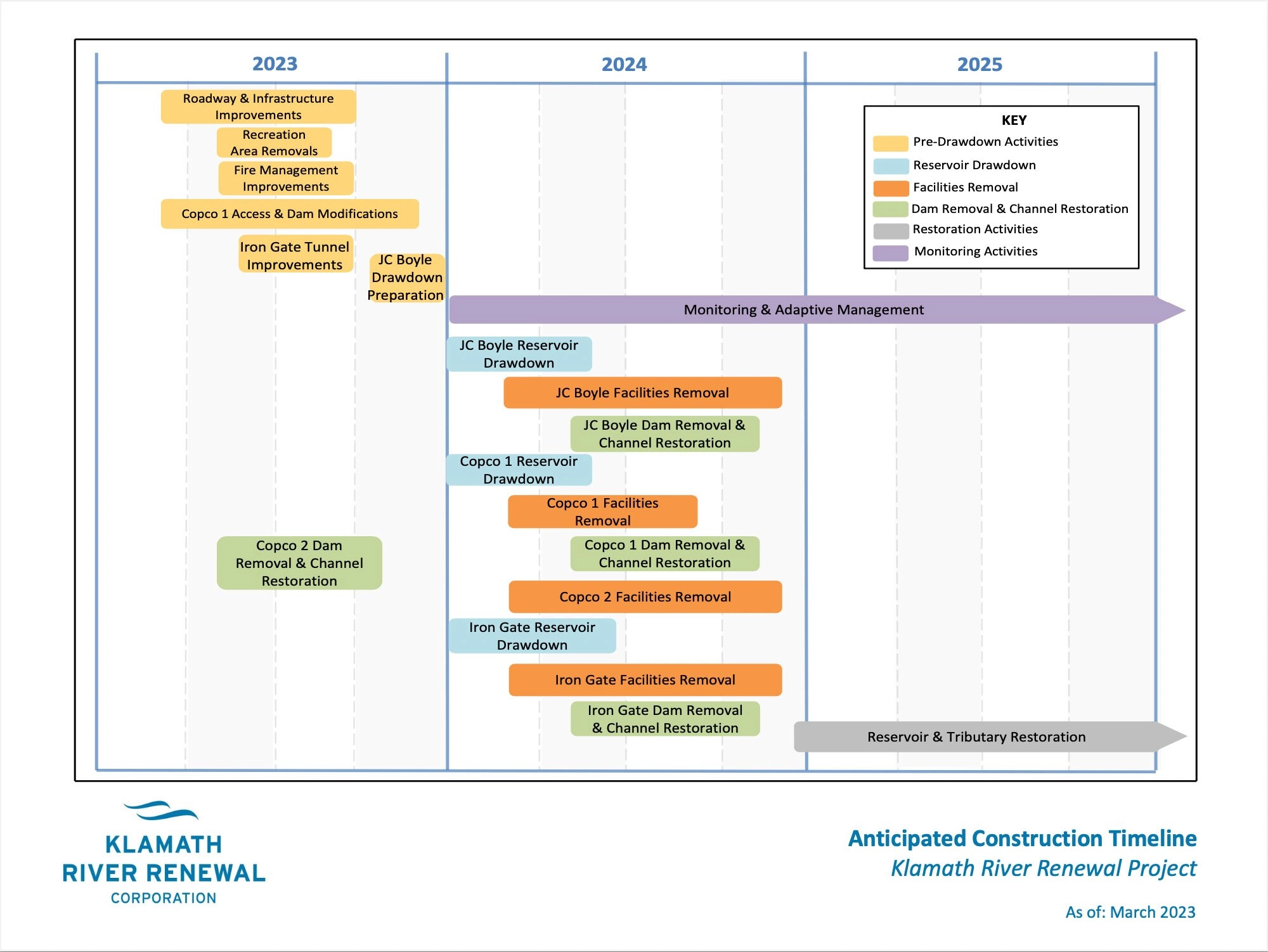
Resource Environmental Solutions (RES) is leading restoration activities to help jumpstart the recovery of the landscape. Since 2019, RES has been on the ground with Tribal partners preparing for restoration. To date, they have collected 17 billion native seeds sourced from the Klamath Basin or from plants grown in the Klamath Basin. As they continue to collect seed, they are preparing tributaries and habitat upstream of the dams for the impending influx of fish. Dam removal will open around 400 miles of habitat for fish that has been inaccessible for over 100 years.
Watch Restoring Balance
This film, Restoring Balance, by Swiftwater Films, reveals the scope and scale of the massive restoration effort unfolding on the Klamath River, led by RES.
In December 2022, NOAA Fisheries, the Pacific States Marine Fisheries Commission, and Trout Unlimited released a detailed plan to guide river restoration post-dam removal in the “reservoir reach” of the watershed or the portion upstream of the dams that fish have not been able to access. The plan indicates 200 habitat restoration, fish screening, and flow restoration projects prioritized by high, medium, or low that will help guide and focus restoration efforts.
How is CalTrout Involved?
CalTrout staff have been actively working on the Klamath for a couple of decades. CalTrout began attending meetings held by PacifiCorp in 2000, to assess the possibility of relicensing four dams on the Klamath River through the Federal Energy Regulatory Commission’s process. We worked closely with our conservation partners (Trout Unlimited and American Rivers), commercial fishing representatives and, most importantly, developed relationships with the Karuk, Yurok and Klamath Tribes. With persistence through plenty of twists and turns (and four presidential election cycles!), the Klamath Hydro Settlement Agreement emerged, establishing the Klamath River Renewal Corporation for the sole purpose of removing four dams from the river.
Explore Our History of Involvement Here
Innovations in Science
Dr. Rob Lusardi, CalTrout/UC Davis Coldwater Fish Scientist, has been working with the Yurok Tribe to establish baseline macroinvertebrate and fish conditions in 17 locations, from Link River Dam to Blue Creek on the Klamath River. Additionally, they are working with agencies and others to develop otolith (small ear bones) chemistry to determine and track birth origin of fish. This will all help inform recovery for fish populations in and around the Klamath River as the dams come out.
Learn More About Our Science Work Here
Preparing Tributaries
The Shasta and Scott Rivers are the two largest tributaries to the Klamath River just below Iron Gate Dam. Both the Scott and Shasta rivers are critical for fish populations in the Klamath and are especially important to act as surrogate habitat for fish during dam removal and subsequent river recovery. CalTrout has been working for over 15 years in the Shasta and Scott River valleys, partnering with ranchers to update irrigation and water management practices. These efforts will improve habitat and flows and will allow wild fish populations to recolonize the Upper Klamath River above the dams.
Learn More About Our Work in the Basin Here
Learning from the Klamath to Accelerate Other Barrier Removals
Damon Goodman, CalTrout Mt. Shasta-Klamath Regional Director, is leading a study to answer the fundamental question “how many fish repopulate the Klamath after dam removal?” The project team is working directly with the experts who have used sonar technology to count fish repopulating the Elwha River after dam removal, Smith River, Eel River and in other large rivers around the west coast. This is a collaborative project developed shoulder-to-shoulder with the Karuk Tribe, Yurok Tribe, RES, California Department of Fish and Wildlife, Oregon Department of Fish and Wildlife, NOAA Fisheries, U.S. Fish and Wildlife Service, Humboldt State University, and others. The team is slated to hit the ground on this project later in 2023.
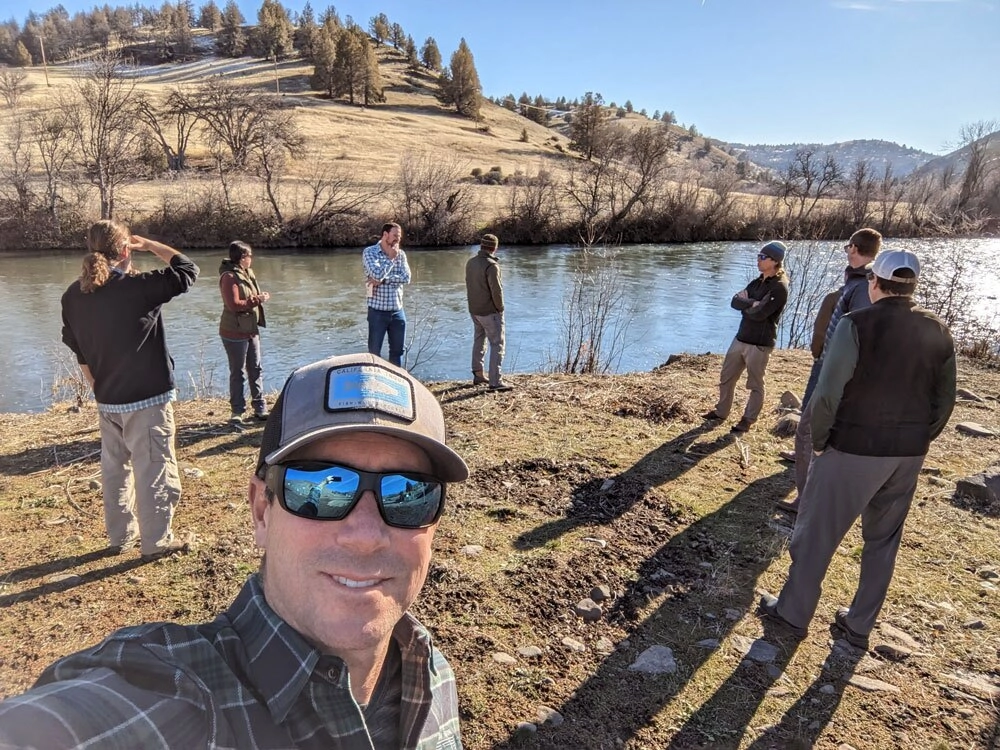
CalTrout Regional Director Damon Goodman with the monitoring project team.
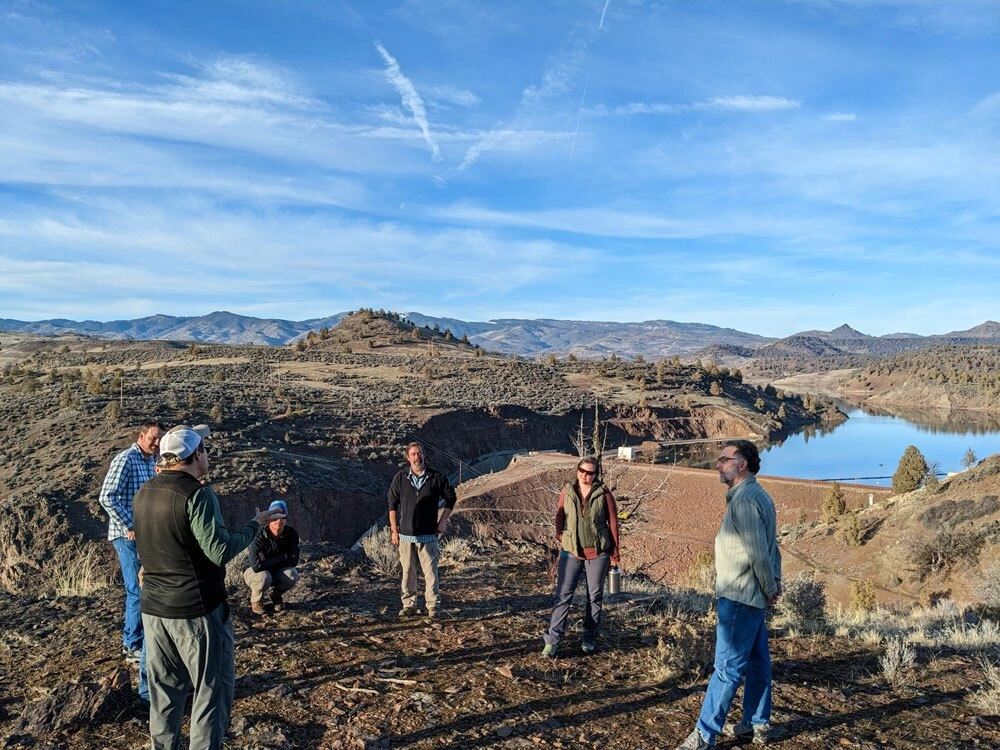
The team stands above Iron Gate dam.
We are beyond thrilled for dam removal to take place, but we also want to recognize the sacrifices that Tribes have made along the way on the road to removal.
“Tribes do not have a stream of funds that really support the type of battle and the strain that this restorative justice project has put on them. We’ve lost so many people along the way throughout this battle, and it’s really important for us as tribal people to recognize those who have fought and who have held us together,” said Wendy Ferris, KRRC Board Member appointed by Karuk Tribe, in a recent news conference.
“The stars really all had to line up throughout the last 20 plus years of working towards making this project actually happen. We are grateful for all of the people involved in this project and look forward to having an environment and an ecosystem that is healthy and thriving down the road.”
The post Klamath Dam Removal: It’s Happening appeared first on California Trout.

